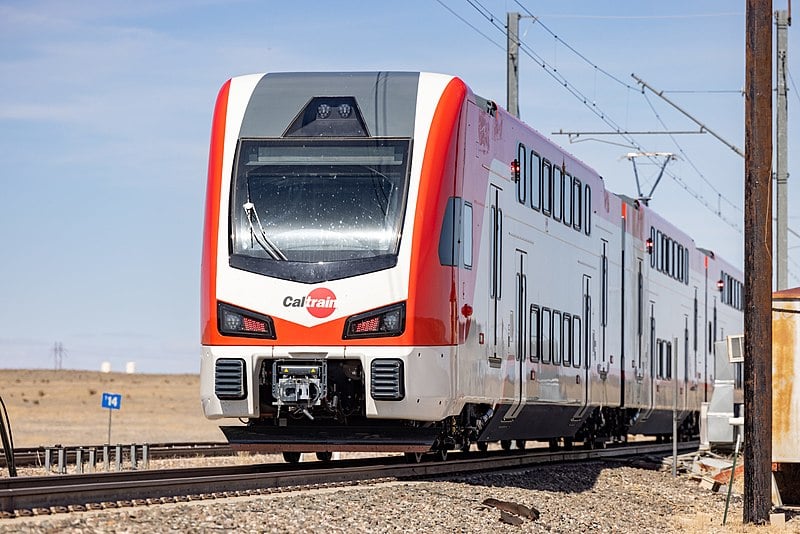Editor’s note: The below article was originally published at All About Trains.
Americans have this love-hate relationship with trains. The evidence is both clear and undeniable.
To High…
Prior to its introduction in mid-to-late 1820s America, back then the train was as foreign a concept to its citizens as the New World was to Europe’s first explorers. No one knew what to expect. It’s taken some getting accustomed to, some getting used to.
It’s analogous to when someone moves into a new home: it takes time to settle in, to become familiar, to become acclimated. It comes with the territory.
The railroad realm has been part of the home landscape for nearly 200 years now. Railroads in America have become a fixture, the industry itself becoming an institution.
If you want to know how this country is doing fiscally, all one need do is observe the railroads and its coupled-together train activity.
The platform reached its zenith in 1916 with the numbers of operating railroad companies, with both the number and types of trains moving and with the amount of cargo carried, all on a 254,000 route-mile train-track network. The lines seemingly going everywhere. The railroad, mode-wise was for all intents and purposes, the only game in (and out of) town.
Then, along comes the Stock Market crash in the late 1920s, the Great Depression of the 1930s, and the proliferation of the automobile and airplane in the 1940s, ‘50s and ‘60s, and the one-time dominance that the railroads maintained, was eroding, rotting, wasting away. Them good ol’ days? Gone!
To Low…
Welcome to the mid-20th century.
It was right at this time that America’s railroad realm did a reality check. Deferred maintenance, tremendous loss of revenue, thinning of labor ranks and an overarching insider, if not outsider, fostered sentiment that trains and that of railroading itself had become anachronisms. Taken together, the effect this had on the industry, on the institution, well, that had kind of painted a picture that railroading and trains were done. That it was a construct of a bygone era. The platform had seen far better times. It was as if there had been a complete reversal. In fact, conditions had gotten so bad, so forlorn, so onerous, that calling it a day appeared to be what was being called for, that this was the order of the day. Were the good times over? Were the good times, the high times, the fat times gone for good?
To Essential Role
Now enter the 21st century and a whole new mindset and era. A time that is otherwise known as the Climate Change Age. On the world stage, the industry accounts for just two percent of all contributed greenhouse gas emissions, a fact that never should be lost sight of, should never be forgotten.
Another fact that should always be remembered is what saved “home-front” railroading: it was foresight, insight and something called intervention. Without all three, this one American institution would have all but been erased, all but been dismissed, all but been written off.
So, what, specifically, are we talking about here?
What we have now is a platform that’s been pared down to a workable, manageable 140,000 track route-miles. Such had arrived at this so-called station, because of saving-grace legislation; legislation in the form of the Railroad Revitalization and Regulatory Reform Act of 1976, the Staggers Act of 1980 and the action that salvaged and restored what was left of the then barely limping-along passenger services and the equipment that enabled such service. It was the very spark that served to establish Amtrak.
And what we have today is a strong and healthy industry. A mode that moves a full 40 percent of all domestic freight and does this all on very well-maintained and, for the most part, smooth-running, technologically-current and, if you will, technologically literate, state-of-the-art infrastructure. Add to this the bevy of light- and heavy-rail transit and commuter-served passenger offerings, and what you’re looking at is an authentic, genuine success story, one that seemingly no other single concern has even come close to rivaling, except for maybe, possibly one: space exploration.
On the brink of becoming extinct, out of the ravages of that dereliction rose a force so strong, so powerful, and with such renewed vitality, that the likelihood of a repeat performance of events that played out and was so pronounced in the mid-20th century in this day and age, is all but nil, most fortunately.
America and trains: Where would we be without them?!
Updated: Jul. 24, 2024 at 2:25 p.m. PDT.
Corresponding, connected home-page-featured image: Peninsula Corridor Joint Powers Board via Wikimedia Commons
Copyrighted material.
